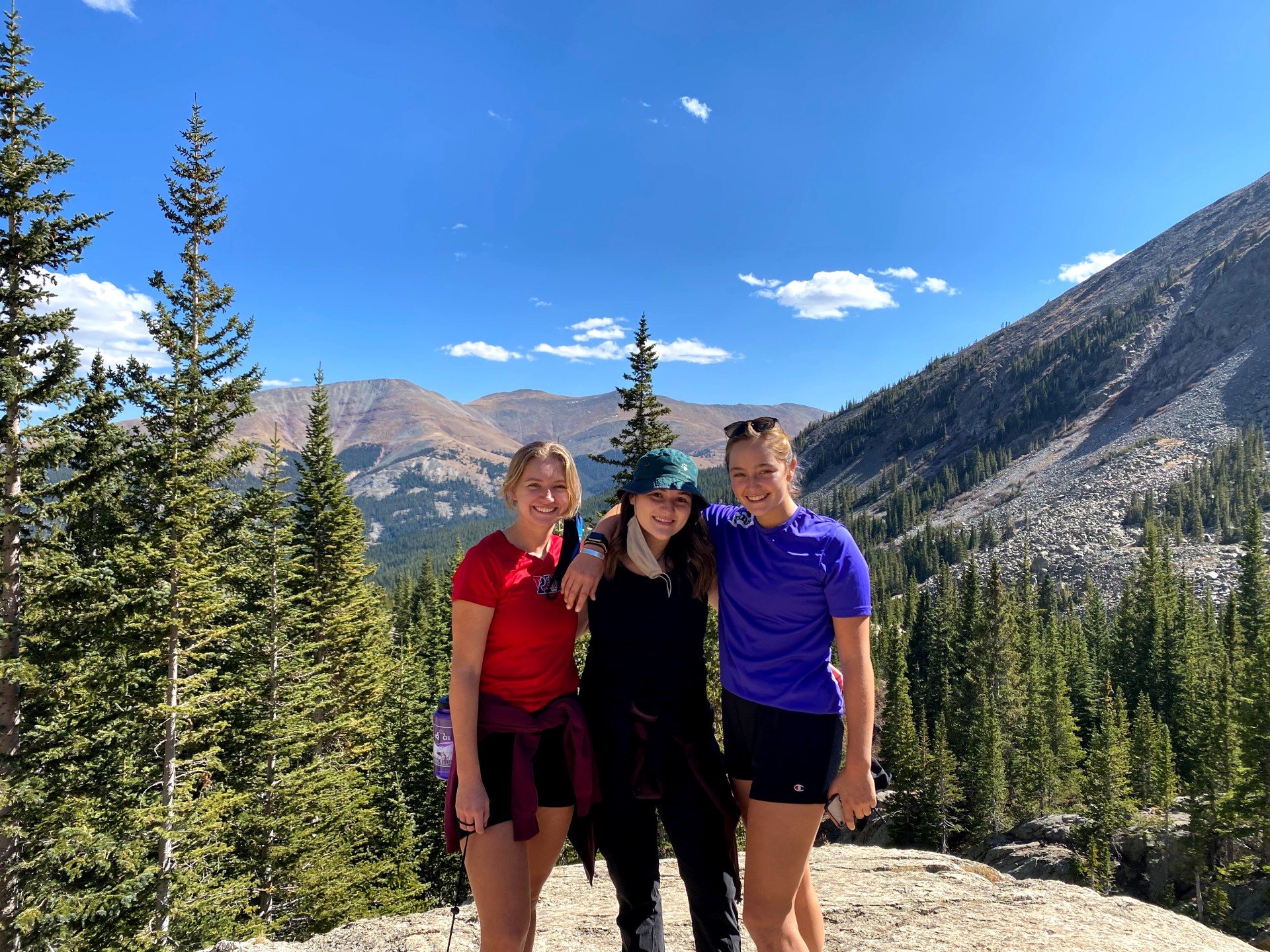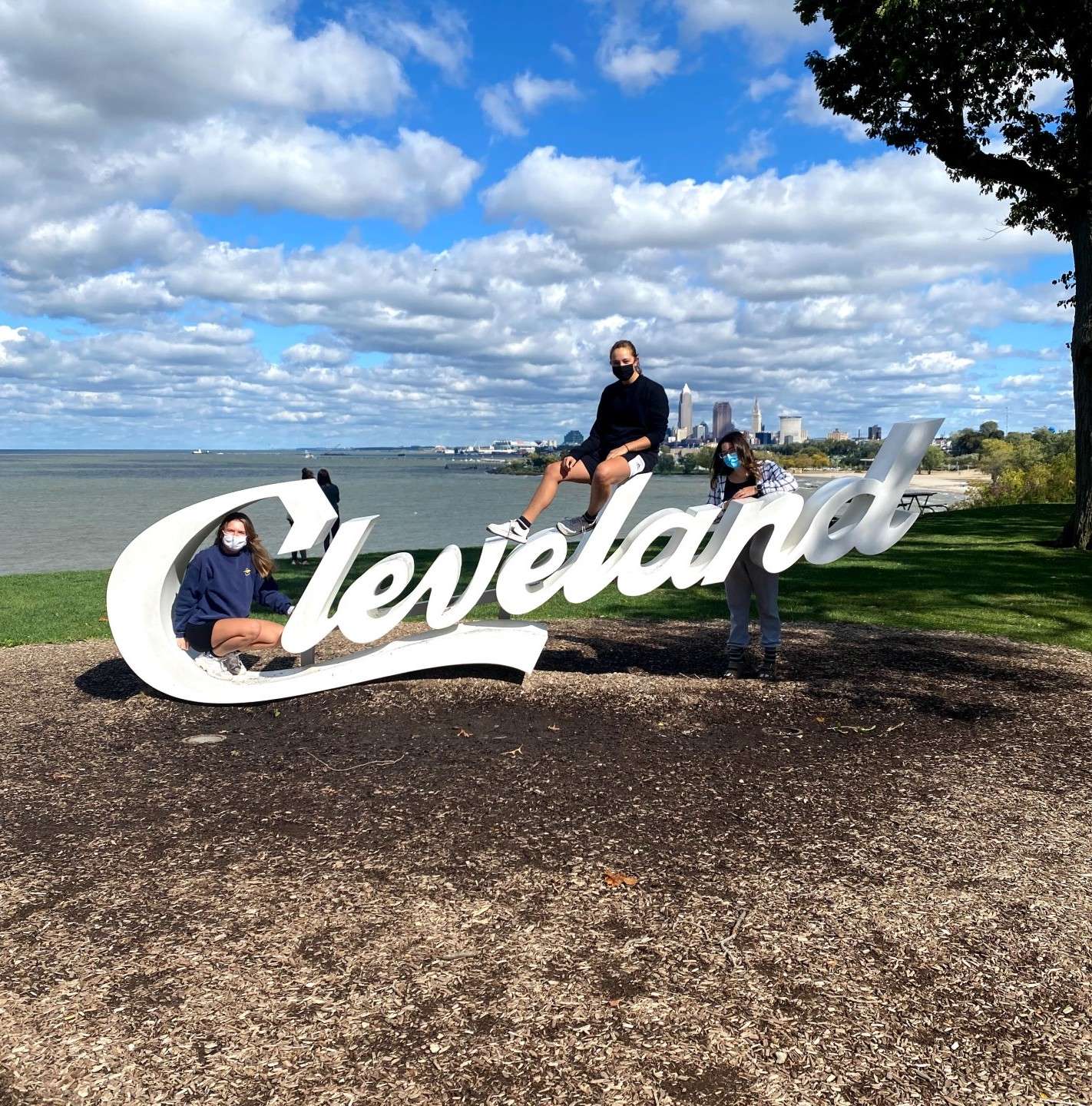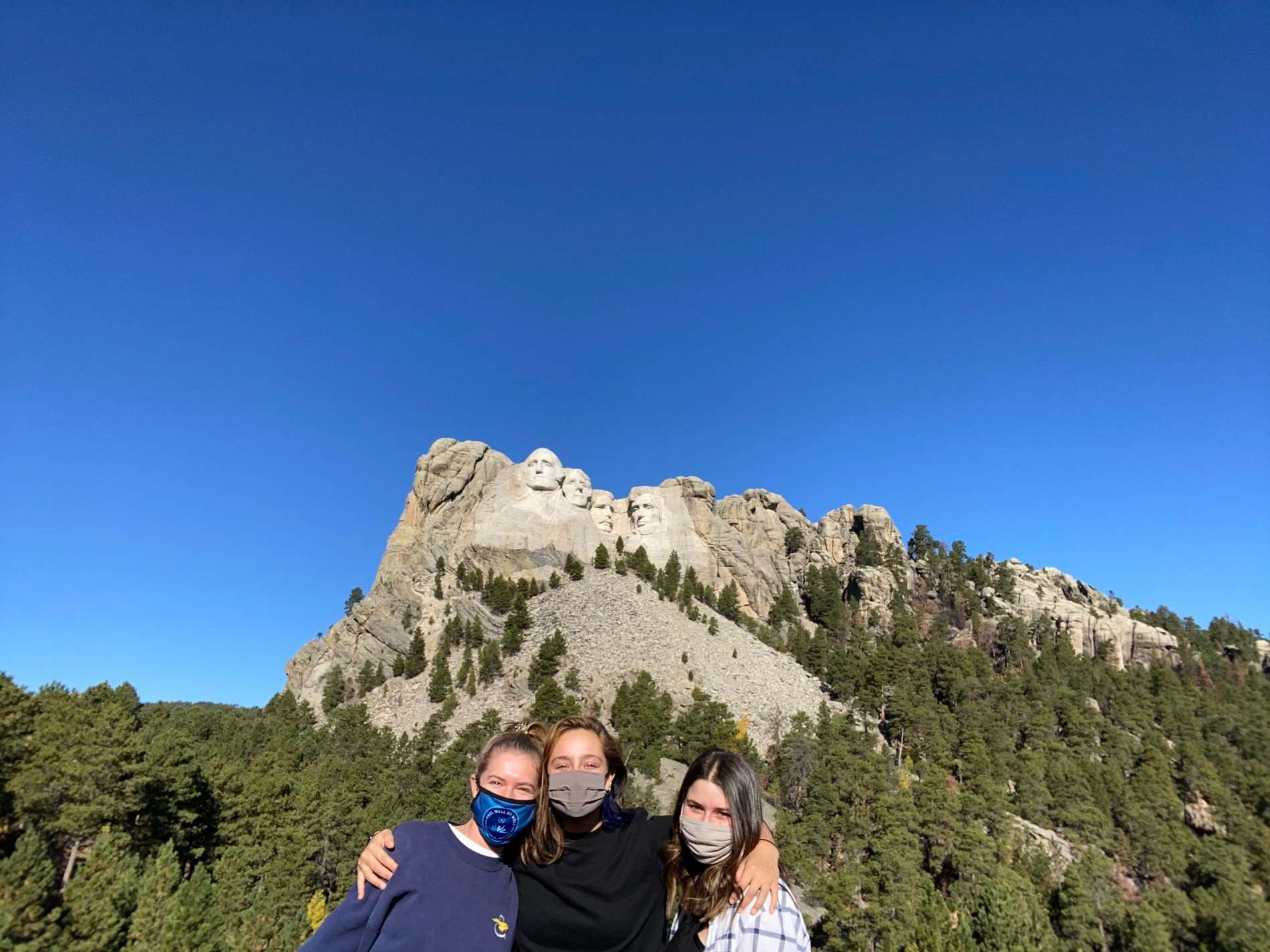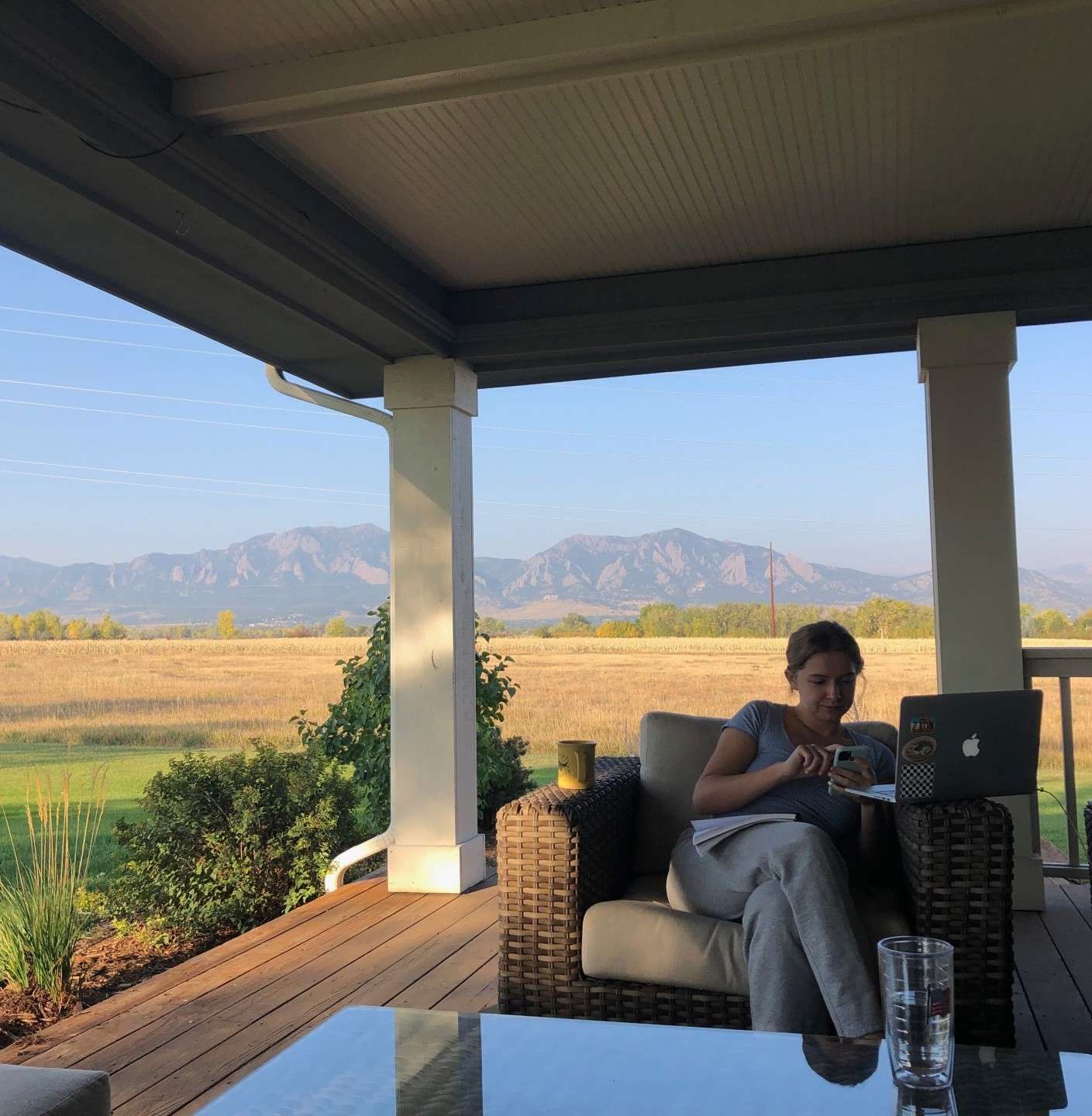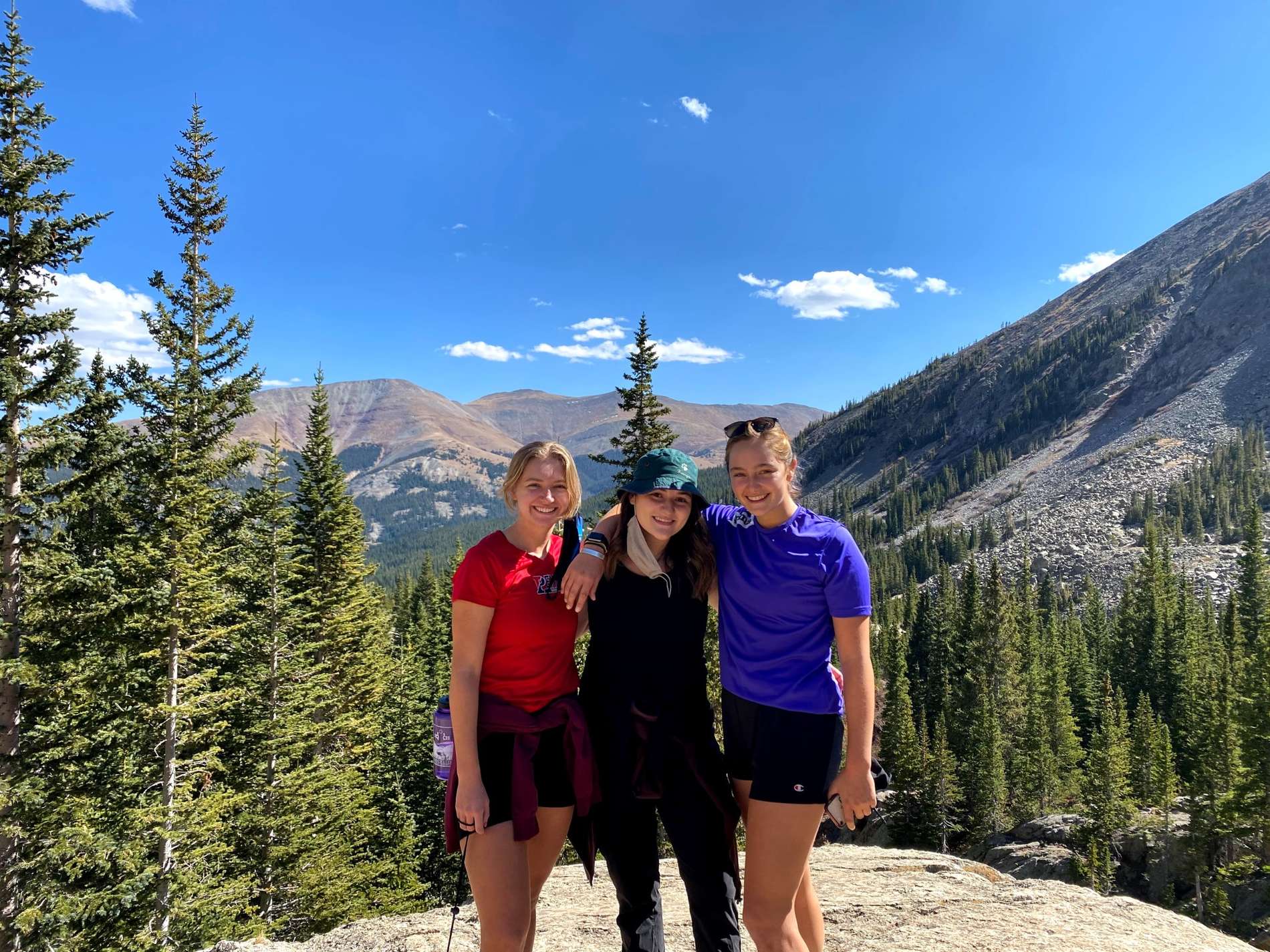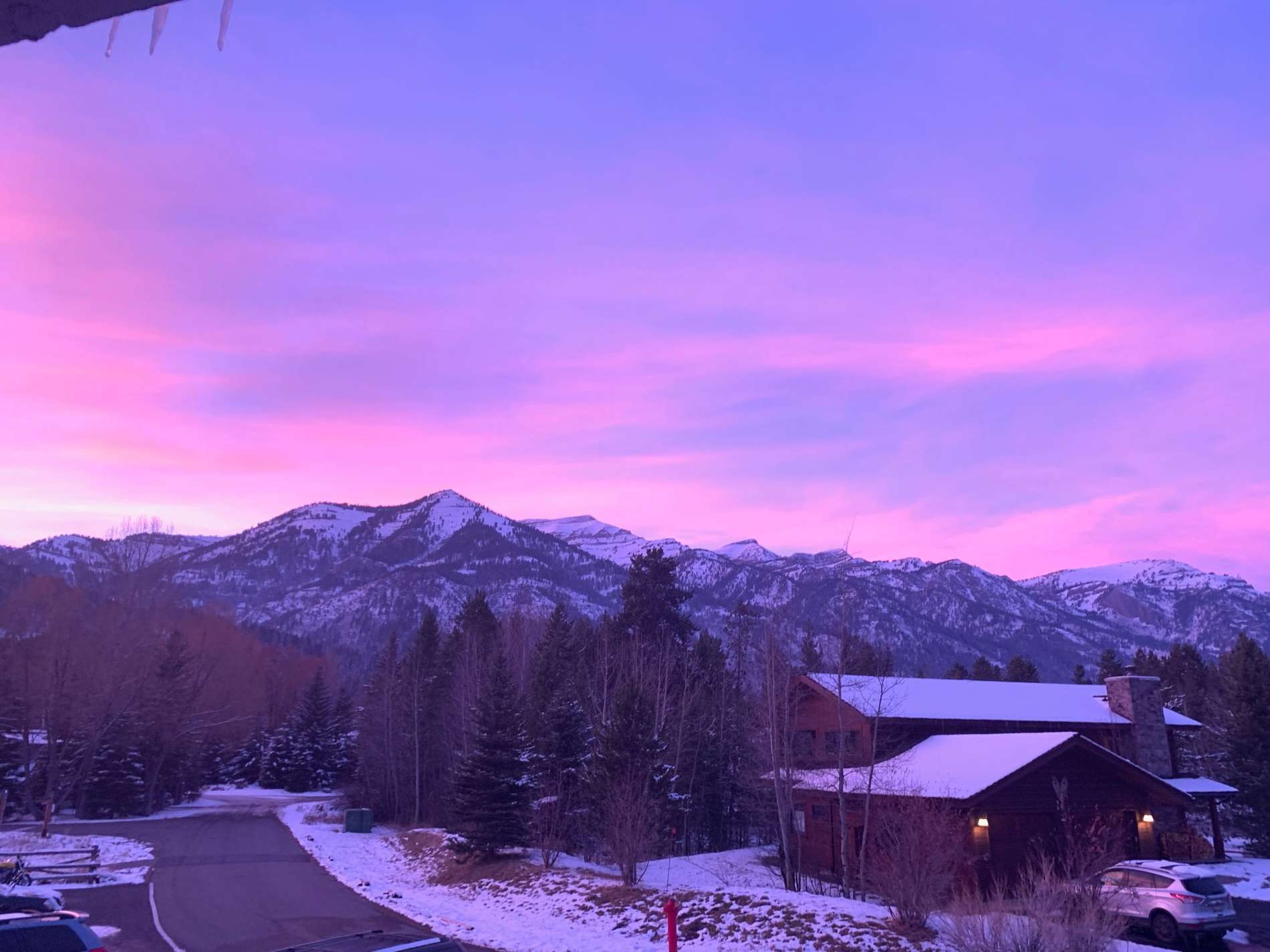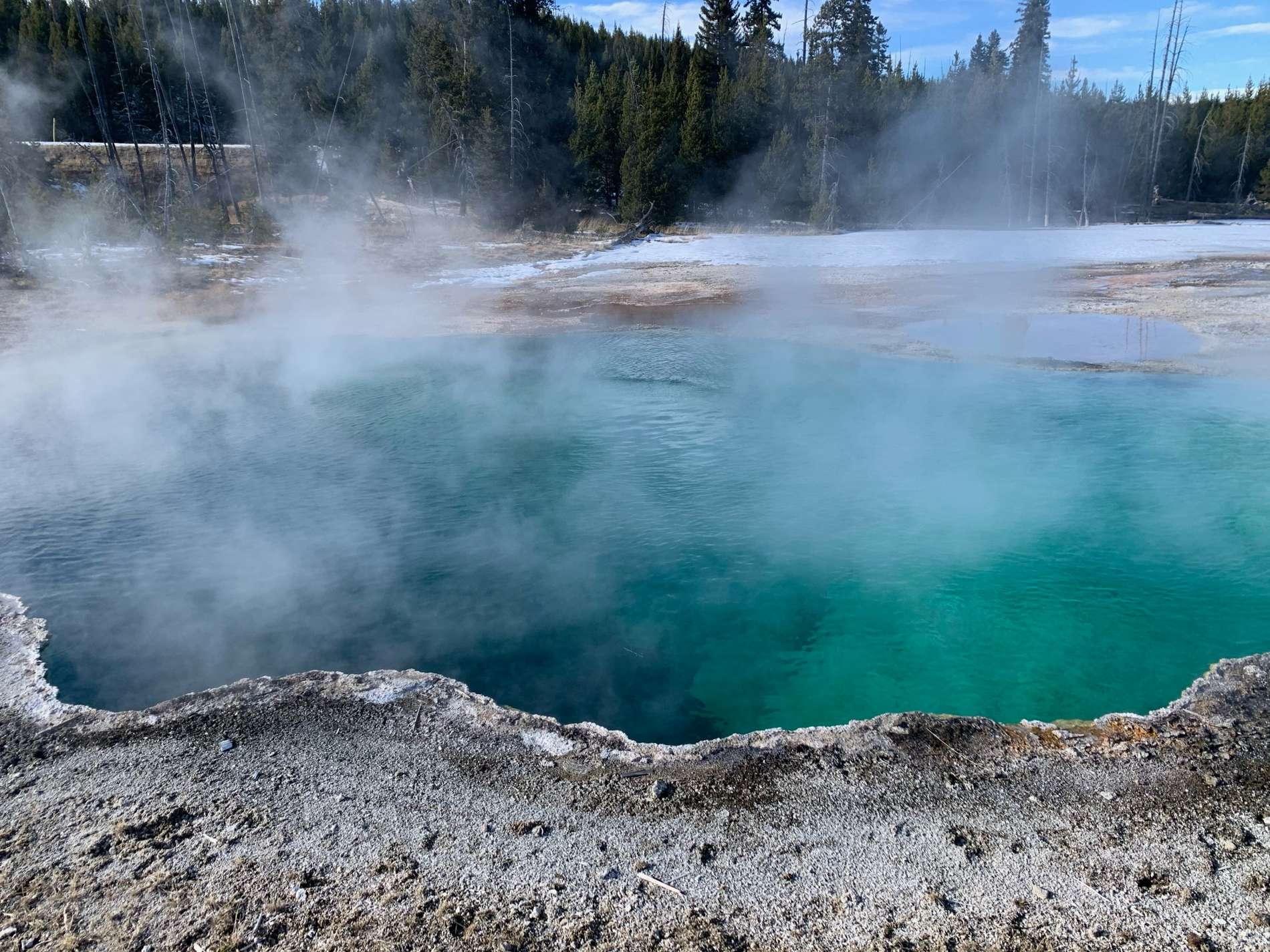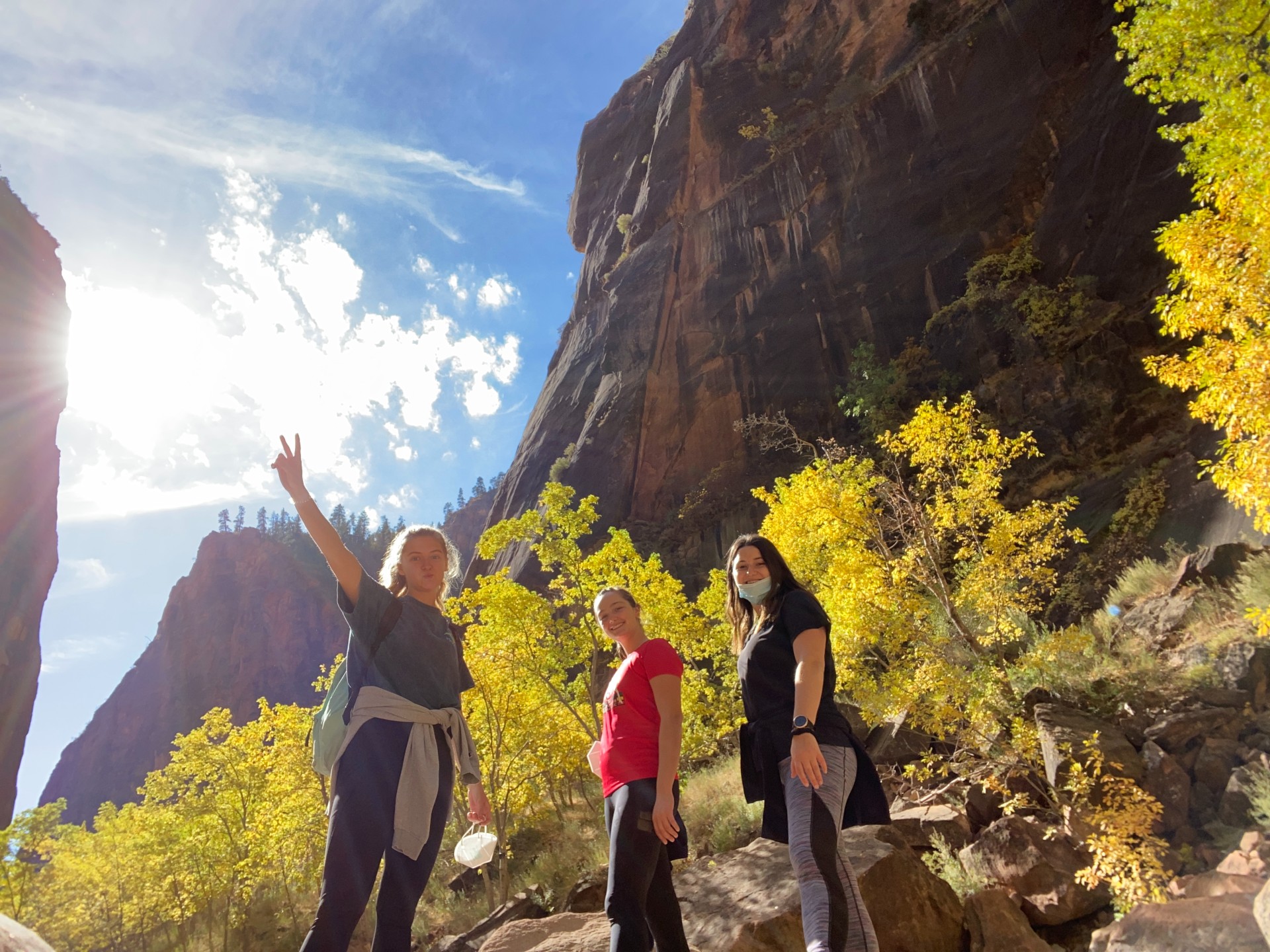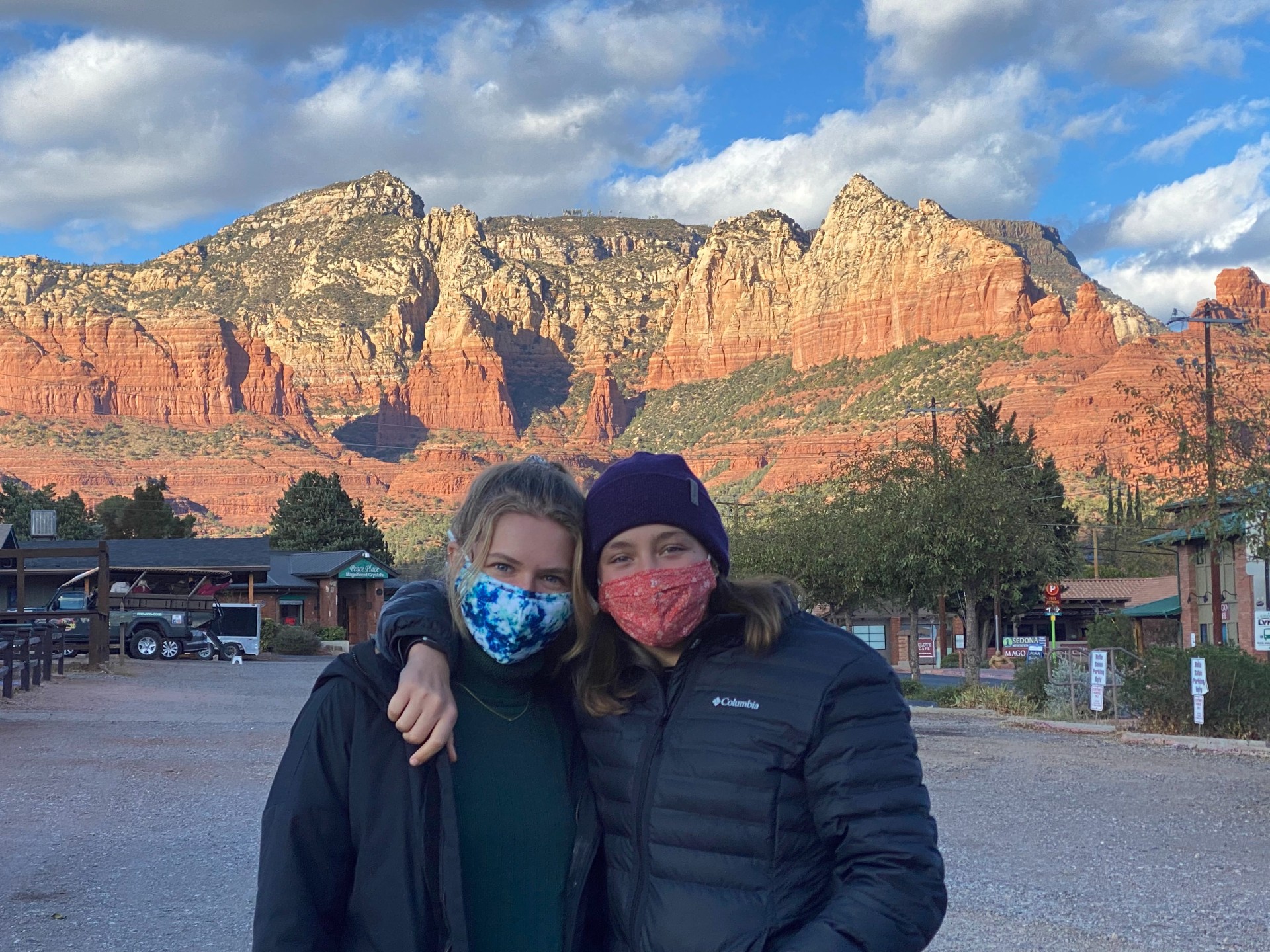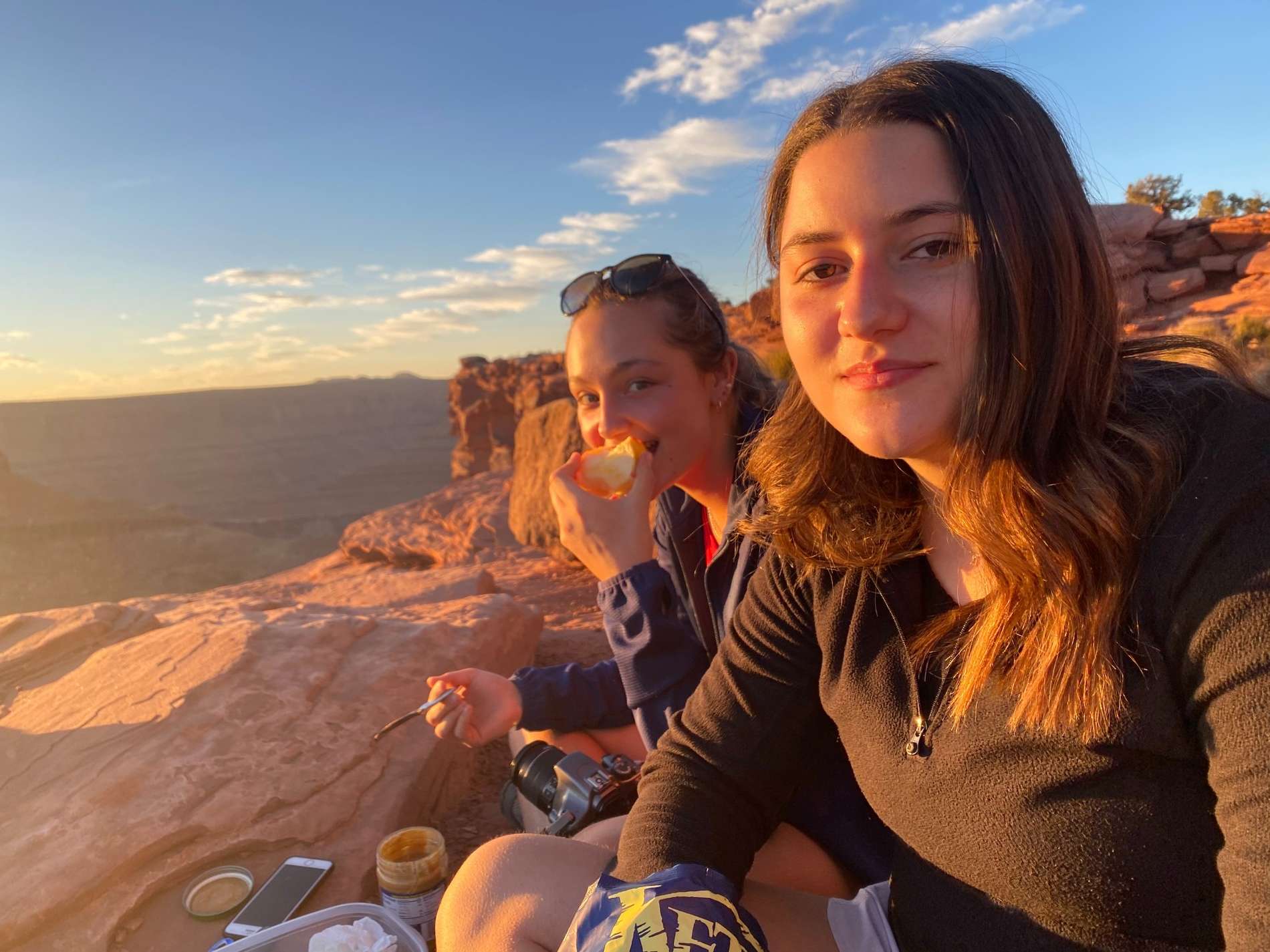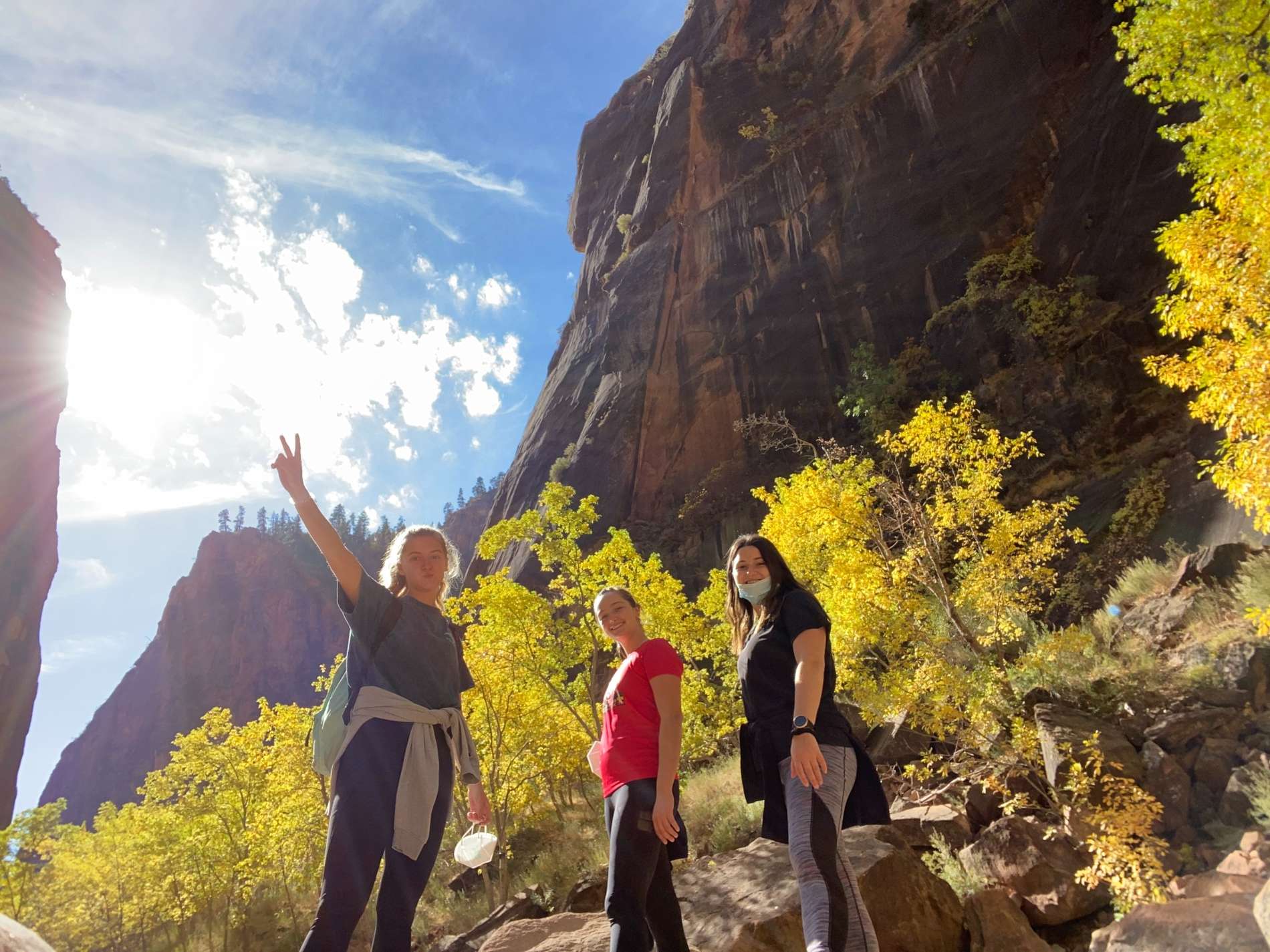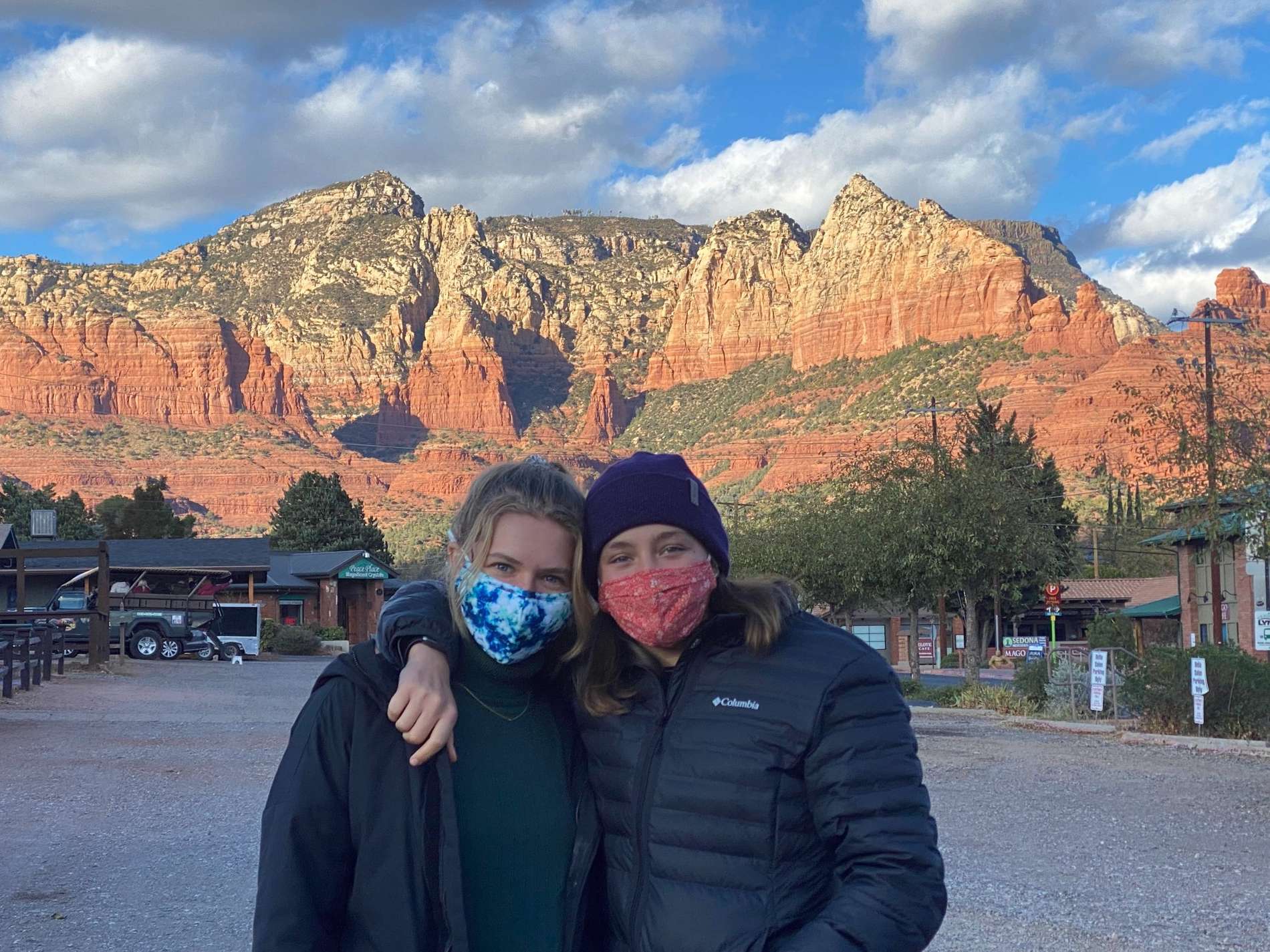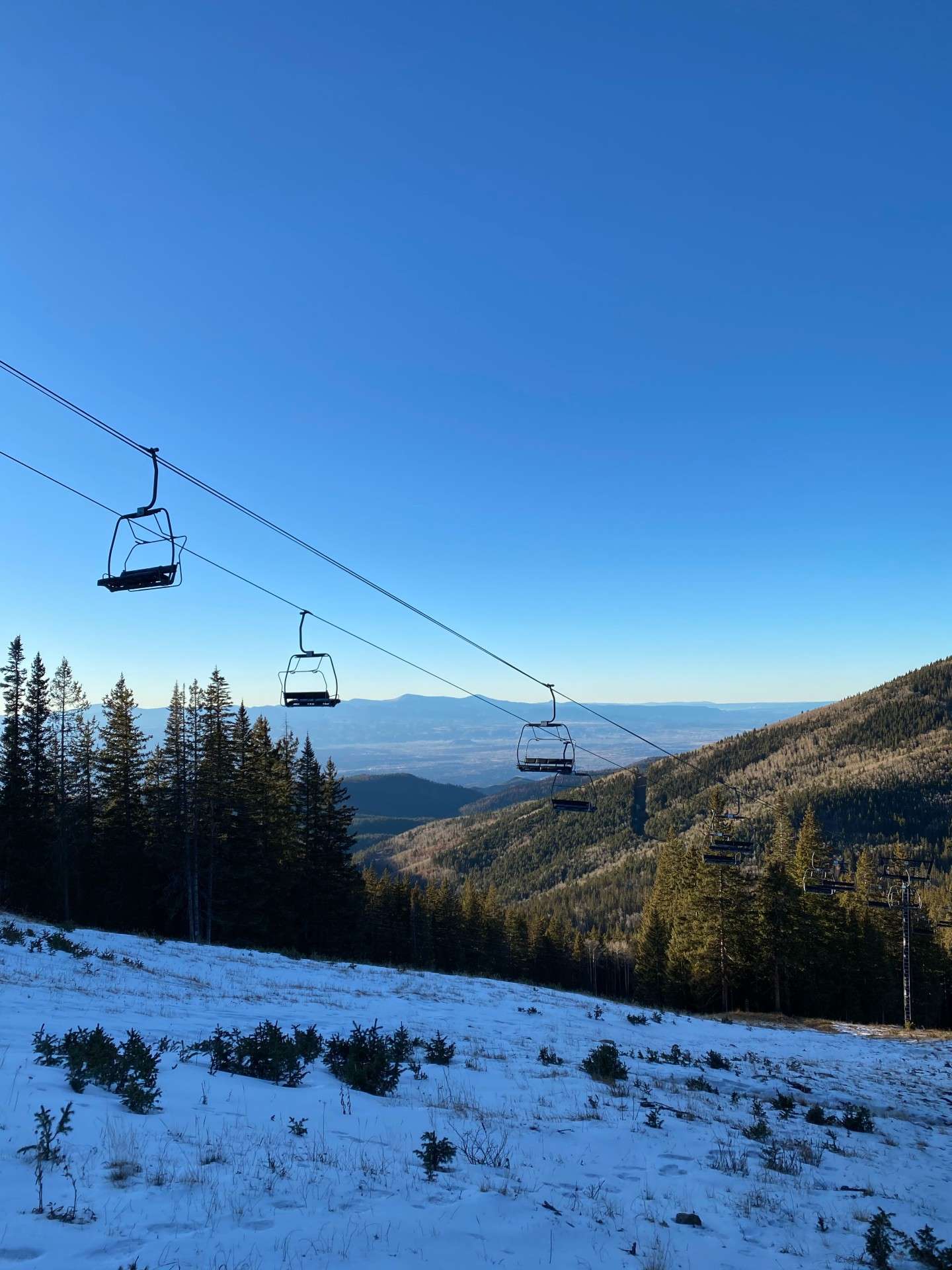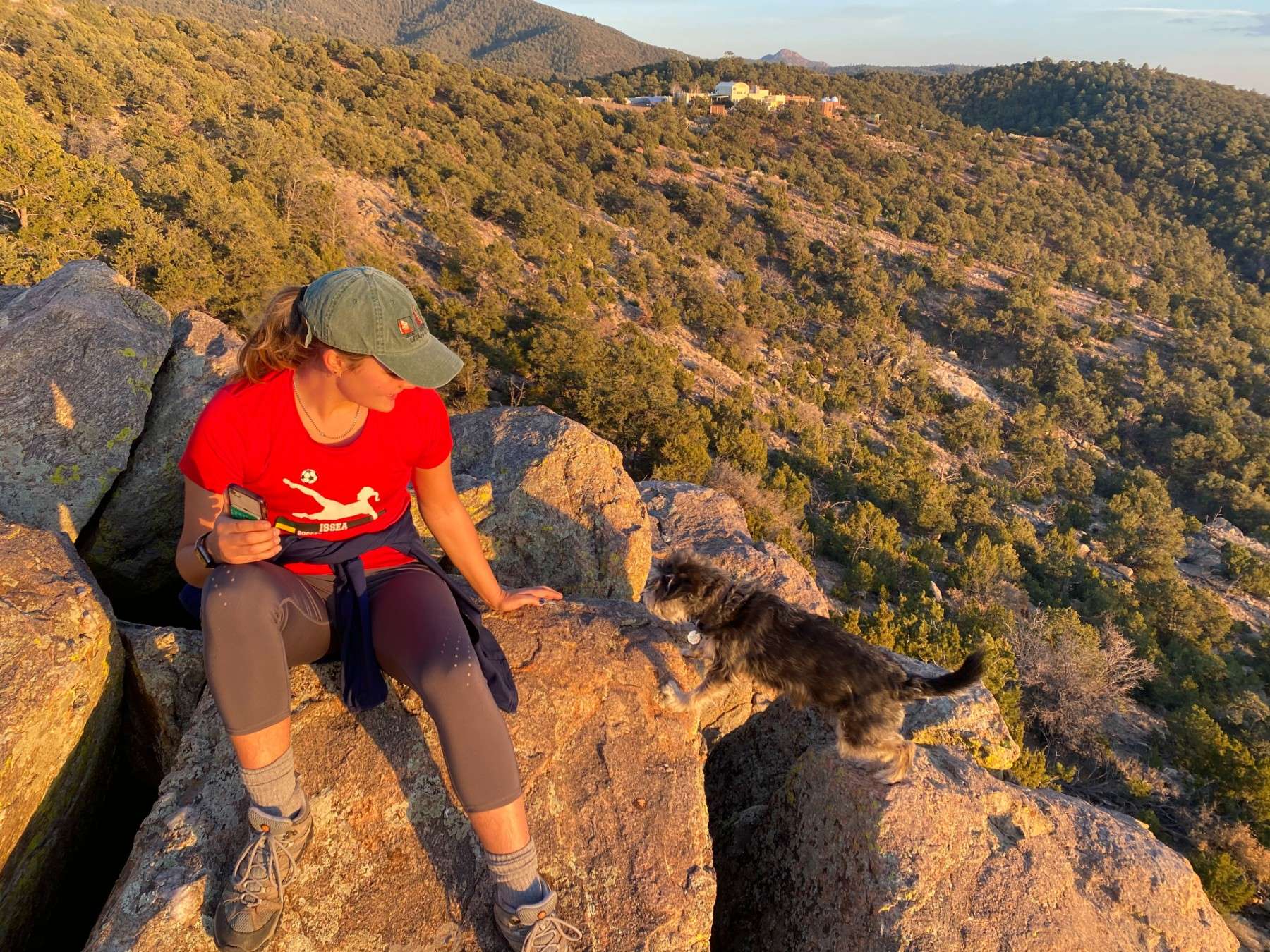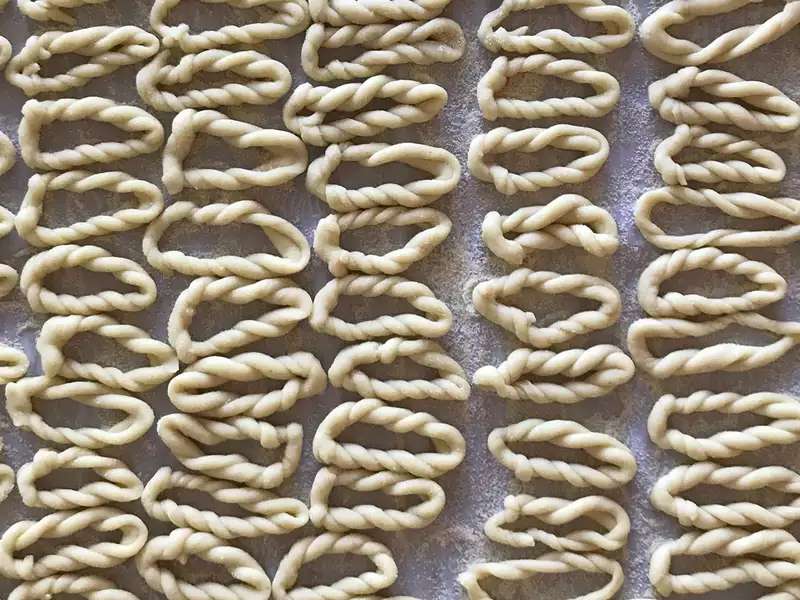[Main photo: Jana Jaran, Lily Clurman, Sophia Psaila]
The COVID-19 pandemic forced many to rethink the way they worked, learned, and lived. Three Barnard students rose to the challenge when they took their courses on a seven-week, cross-country road trip this fall. Elizabeth (Lily) Clurman ’22 (political economy), Jana Jaran ’22 (neuroscience), and Sophia Psaila ’22 (economics) drove more than 7,000 miles from Downingtown, Pennsylvania (Jaran’s hometown; Clurman is from Providence, Rhode Island, and Psaila is from Larchmont, New York), to Santa Fe, New Mexico, and back, all while maintaining their course loads, completing midterms, virtually collaborating with academic peers, and casting their ballots on Election Day (November 3).
The ability to pull off such a journey was one of luck and preparation, the trio admitted, especially at a time when many are facing hardships. “I know a lot of people are struggling financially right now and don’t have the means to do something like this,” Jaran said. Both she and Clurman worked over the summer of 2019 to help finance the trip. Along the way, they mostly stayed with family members or close family friends, where stable WiFi connections made it easy to log in for classes during the weekdays.
In recognition of health and safety protocols, all three students got tested for COVID-19 before hitting the road, and during, and practiced social distancing and mask-wearing while traveling. Their family and friends were also tested. “We got tested before leaving, and then again in Colorado, Arizona, and New Mexico, all of which were negative,” Jaran said. “We also kept Clorox disinfecting wipes and hand sanitizer in the car, which we used every time after we stopped for gas and food.” The trio was also intentional about spending time outside and wearing masks during recreational activities. “While hiking, running, and sightseeing, we always wore masks, even when we were distanced,” added Jaran.
Throughout the trip, Jaran, Clurman, and Psaila found different ways to supplement their coursework with hands-on experiences. Jaran, who is working on a project that focuses on college students’ mental health for one of Barnard’s ThirdSpace@ BUILD Circles, is also interested in how voting plays out across the country. Being on the road allowed her to see firsthand how much population density varies state by state and consider what this means for presidential elections. “We noticed considerably fewer homes in states like Iowa and South Dakota, where due to the Electoral College system, votes disproportionately matter more [and greatly impact] the outcome of U.S. elections,” Jaran said.
Having a semester exclusively online provided pathways for new learning opportunities beyond the classroom for Clurman as well. Her Introduction to Environmental Science lab and lecture professors (Sedelia Rodriguez and Terryanne Maenza-Gmelch), for example, designed a curriculum that encouraged the exploration of local spaces and supported independent and global peer studies with Barnard students from places like Cambodia, Paris, and Singapore. With mandatory lab sciences required of all students, the political economy major used the road trip to better understand climate and humans’ relationship to the natural world. Similarly, Jaran and Psaila were interested in learning more about farming and the economics of recycling.
One aspect of the trip that the trio most savored was the ability to use nature as a backyard lab. “On long virtual school days, I used the labs as excuses to get outside and explore the Boulder [Colorado] Reservoir and Flatirons rock formations while conducting biodiversity studies and producing ecology reports,” Clurman said. “While we were in Boulder, the record-breaking CalWood fire burned over 10,000 acres of land just 10 miles from us. My environmental science class was covering our biodiversity unit during this fire, and my friends and I were able to discuss the causes behind the clear pattern of increased wildfire prevalence worldwide as a result of climate change and human activity.”
Psaila echoed Clurman’s sentiments, noting, “The more time I spent outside observing the coexistence between humans and nature, the more I recognized the cruelty of deforestation, hunting, and wildlife disturbance.”
For this winter break “Students Share” feature, Clurman, Jaran, and Psaila provided reflections from their journey across the country, along with breathtaking images of the sights along their way.
Leg #1: Oct. 2-4: Downingtown, Pa. —> Boulder and Edwards, Colo. (1,900 miles)
Jana Jaran: If there’s any way to remind yourself of the turbulence of 2020, it’s three straight days of driving across the U.S. We planned the driving in two-hour shifts, which ended up working out perfectly for bathroom breaks and gas refills. Each day of driving was broken up with one major midday stop (lunch break!) in a fun and interesting city. The midday break also gave us the chance to stretch our legs before starting the second long drive of the day.
We started our trip in Downingtown, Pennsylvania, surrounded by hills and the familiar greenery of the Northeast, and made our first stop in Cleveland, Ohio, where we grabbed some Thai food at West Side Market. We ended the night in Chicago, at the home of Lily’s cousin Emily, who — over wine and Greek food — shared with us her experiences of working from home, how the pandemic has affected her in-person work at the Department of Energy, and her at-home workout recommendations. We set off the next morning for the longest day of our three-day trip, through the plains of the Midwest.
During our many hours cruising through flatlands and farms, we talked about the distribution of wealth in Middle America and the way that farm labor dominates the economy. We also observed the lack of healthy food options and the abundance of cheap processed foods at gas stations and in town centers. We made our midday stop in Des Moines, Iowa, where we enjoyed a socially distanced picnic at the Capitol with a few of Lily’s fellow winter interns from Elizabeth Warren’s organizing campaign.
By the late afternoon, we made it to Sioux Falls, South Dakota, to see the famous Big Sioux River and the ruins of the 19th-century Queen Bee Mill, before finally crashing at a lodge in Rapid City for the night. Our final day of driving was centered around two South Dakota tourist destinations: Mount Rushmore and Cosmos Mystery Area. We headed to Mount Rushmore with our masks and hand sanitizer, and as we walked around, we wondered about the contributions of the four presidents and debated whether their legacies warranted the alteration of Native land. On our way out, we stopped at the Crazy Horse Memorial, another mountain carving depicting the Oglala Lakota warrior riding a horse and pointing to his tribal land.
The last stop was the Cosmos Mystery Area, a small tourist cabin in Rapid City with a mysteriously strong gravitational pull. With close examinations of the level tool, angled cabin floors, and trees growing sideways, we debated the idea of gravity’s variability. The journey became much hillier as we headed into Colorado and stopped in Denver, where Sophia’s aunt equipped us with supplies for our time in the West: lip balm, lotion, and of course, more masks.
@busdriverlover Road trip across the USA checkkk #CollegeGotMeLike #barnard #cosmos #southdakota #colorado #chicago #minivan #sienna #maskon
♬ Summer Days - Martin Garrix / Macklemore / Patrick Stump
Leg #2: Oct. 4-24: In Colorado for three weeks
Lily Clurman: I hadn’t been to Colorado since I was about 6 years old, and I was excited to explore the mountains and open spaces. We stayed at my aunt and uncle’s house in Boulder for two weeks and at their house in Edwards for one.
Apart from our schoolwork, we tried to see Boulder safely. Throughout the trip, we made efforts to buy locally and support Black-owned restaurants and local businesses. On a night off from midterms, we ate some really fantastic Ethiopian takeout! My cousin, a student at CU Boulder, also gave us a socially distanced campus tour and showed us some of the best spots for hiking and outdoor time around the city. We compared our experiences taking classes during COVID-19 — her school is conducting most of their classes remotely.
Having free time before and after our classes has been one of the advantages of choosing to take our classes from different locations. There’s always a new place to explore. Jana and I have been keeping up with the Columbia University Womxn’s Rugby workout program, trying to stay in shape for when we can get back on the field with our team. She is a club president, and I am the match secretary. As club officers, Jana and I have been organizing biweekly meetings over Zoom to stay connected and chat about rugby.
Our last week in Edwards was a good change of pace, but the altitude definitely impacted our ability to work out. After three weeks in Colorado, we got tested for COVID-19 again before our next leg of the journey.
Leg #3: Oct. 24-31: Edwards, Colo. —> Wilson, Wyo. (400 miles)
Sophia Psaila: Although Jackson Hole, Wyoming, was a last-minute stop on our trip, it was one of my favorite places I’ve ever visited. In every direction, there were magnificent mountains, wildlife, and stunning natural beauty. Despite driving through a snowstorm our first night, we awoke to a picturesque winter wonderland the next morning and a view of the big, bold Grand Teton mountain range. Throughout the following week, we bundled up by the fire, sipped hot chocolate, and admired the beauty of the mountain range while taking our virtual classes. Every day before sunset, we explored the area and went on hikes. Hiking in the grand landscape of the Tetons provided exceptional mental health benefits. Gazing upon the serenity of untouched snowy summits reduced stress from schoolwork and induced a sense of tranquility. (Read President Beilock’s op-ed in Forbes about the benefits of taking the brain on vacation.)
During our week in Jackson Hole, we spent a day in Yellowstone National Park before heading to Utah. Like most tourists, our first destinations in Yellowstone were the geysers. Old Faithful, Morning Glory Pool, and the colorful Grand Prismatic were like nothing I have ever seen before: strange, mysterious, sulfur-smelling, steaming vents with flowing waters. You truly get a feel for the isolation and natural beauty of this place. In the open meadows, we spotted bison, deer, bald eagles, and horses. The unmatched grandeur of the park gave me perspective on the diversity of the landscape and species. Wyoming not only has jaw-dropping scenery, it also shows the intricate relationships in nature. After Yellowstone, we continued to explore other national parks and then drove to Utah.
@busdriverlover WYOMING vlog alert🤭🍳💘 #geyser
♬ MANGO (feat. Adeline) - KAMAUU
Leg #4: Oct. 31-Nov. 2: Utah (530 miles)
Jana Jaran: Because of the mid-semester break, we decided to take a detour en route to Arizona and visit some of Utah’s national parks. We started off in Moab, spending Halloween evening in a hotel in Arches National Park. The next day, we hiked the famous Devil’s Garden Trail and spent sunset eating PB&Js at Dead Horse Point. The greenery changed dramatically as we drove from Moab to Zion, with the barren rock evolving into colorful foliage and tree-covered mountains. Even with the limitations of some light thunderstorms and river cyanobacteria (a naturally occurring phenomenon in the rivers that can be dangerous to small children and animals if ingested), we were able to hike up to Zion’s beautiful Emerald Pools and see the tall canyon walls of the Narrows. Our stops in Utah were a really great break after Fall A finals and a pleasant distraction from the upcoming presidential election.
@busdriverlover Enjoy these 2 tiny clips from Utah #moab #arches #utahcheck
♬ Travel - Trees and Lucy
Leg #5: Nov. 3-13: Utah —> Mesa and Flagstaff, Ariz. (560 miles)
Jana Jaran: For the majority of our time in Arizona, we stayed in Mesa with my dad. Our first day in Mesa was on Election Day, so we dedicated the first few hours of our drive to Pod Save America, before quickly transitioning to Harry Potter audiobooks and throwback music to distract from our nerves. The election wasn’t officially called for another week, so we spent our days in Mesa trying to focus on classwork, going for runs and walks in the sunshine, and taking breaks at the community pool. By the first weekend, we decided to take a trip to Flagstaff to visit Lily’s mom and a few family friends. On Saturday morning, after hearing news of Joe Biden’s victory and having a toast, we drove to the Grand Canyon to celebrate. We even squeezed in a quick stop in Sedona on Sunday before heading back to Mesa.
Our time in Arizona was filled with election anxiety, but it also encouraged us to engage in conversations with our parents about political issues that are important to us as students and young people during a critical time in the United States. We had lengthy conversations with my dad about COVID-19 precautions at his workplace and how their company has taken measures to provide necessary health resources to the Navajo Nation, the Native American tribe whose land encompasses a large portion of northeastern Arizona and whose people have been disproportionately affected by COVID-19. We also watched news stories of armed protestors at polling places in Maricopa County, where we were staying, and discussed issues of gun rights and the need for police reform.
My November BUILD Circle meeting came at the perfect time. Our group shared personal struggles with online schoolwork, career searches, and feeling drained by conversations about the election. Listening to my peers further confirmed the importance of mental health for young people right now. During our meeting, I shared some thoughts and a rough outline for my BUILD action, with a focus on mental health for college students in the U.S. As the election anxieties began to die down and the Arizona heat started to fade, we packed up and headed for New Mexico.
Final Leg: Nov. 13-19: Arizona —> Santa Fe, N.M. (400 miles)
Jana Jaran: In Santa Fe, we stayed with some of Lily’s family friends, whom she knew from growing up in Providence, Rhode Island. Their home, buried in the mountains overlooking the city, was perfect for walks and hikes — necessary breaks from our daily Zoom classes. Santa Fe’s architecture was really unique, jam-packed with one-story, orange and tan adobe blocks, which gave the city an ambiance of warmth, even on the days when the temperature was below freezing. In the daytime, looking beyond the flat valley, we could see all the way out to Los Alamos National Laboratory, tucked behind a volcanic crater, and at night, the desert sky was clear enough to see Mars, Saturn, and Jupiter all at once. As COVID-19 cases rose across the country, we stayed inside for most of our days. A few of our memorable outdoor explorations included a hike up Mount Atalaya, a snowy day at the Santa Fe National Forest ski basin, and a few long-distance runs accompanied by the family’s exceptionally fit English Setter puppy, Milo.
Each night, after cooking dinner together, we talked around the dinner table for hours about all of the uniquely different ways the pandemic has affected our lives. Among us sat an emergency room doctor, the executive director of a public health nonprofit, a high school senior applying to virtual colleges, and four college juniors. I was glad to stay with this family and learn about the important work of frontline healthcare workers who are dedicating so much of their lives to caring for people who have been impacted by the virus.


